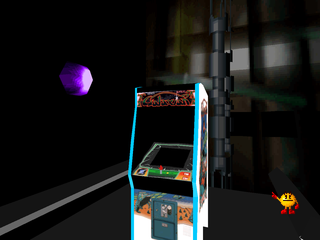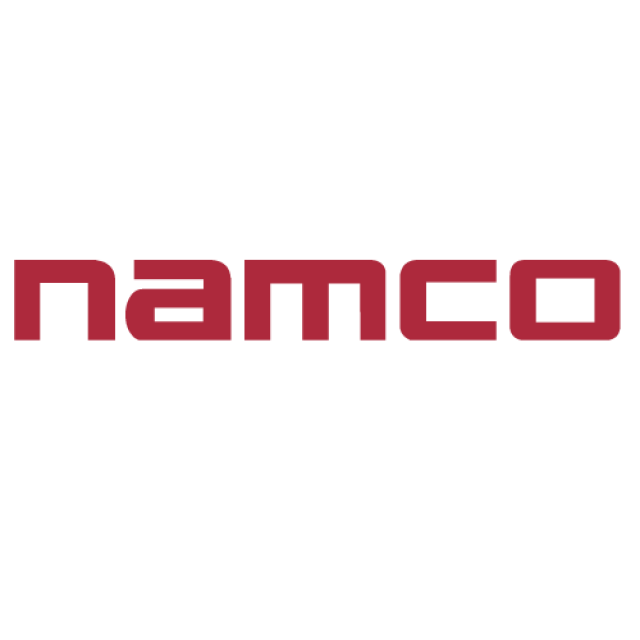NamCompendium is an attempt to survey the output of NAMCO from October 1978 to present. The primary goal of this work is to provide as authoritative of information as possible for Giant Bomb’s Wiki, with the secondary goal of considering the relative merits of individual games. In this entry, we drill down into one of the most influential yet unsung video games ever made. As an aside, I henceforth be abandoning my style guide rule of italicizing game titles. Over the projected course of this project, I imagine omitting italic names will probably save me a few days.
It is tempting to write off Galaxian (1979) as a simple clone of Space Invaders. However, it is just as fair to say that Galaxian was Namco's first "important" game. Yet it remains relatively unsung, perhaps due to Namco having produced a follow up two years later that would vault the company over their peers and into unprecedented success in their field. But before we address its successors, let us consider Galaxian in full.
For starters, we must address the considerably large elephant in the room. On June 19, 1978, Taito released Space Invaders into the Japanese arcade market. Space Invaders became one of the most successful entertainment properties on the planet by the end of the year, going so far as to stoke fears of a 100 yen coin shortage in its home country. Space Invaders and its influence are well documented on this site and elsewhere, but our interest stems from the fact that it launched an entire world of clones. From Nintendo’s Space Fever and Radar Scope, to Texas Instruments’ far less subtle TI Invaders, the industry at large spent a few years hacking at Taito’s formula to scrape in a piece of what was now demonstrably a genuine market for games. Few, however, would best Namco’s output.
Galaxian was not the first arcade game with color, in spite of being described as such in some sources. It is, however, perhaps the earliest arcade game to use multicolored sprites in gameplay. It also managed to include multicolored text for different elements, theme music, and a scrolling star field background. The background scrolling layer was impactful in ways that the game’s three man development team (Sawano Kazunori, Ishimura Shigeichi, and Kouichi Tashiro) could hardly have imagined; Uemura Masayuki, in a September 1994 interview with Nikkei Electronics, stated that Galaxian’s ability to display multiple fast moving sprites against a scrolling background was “a shock to engineers” at Nintendo. He would go on to design the Famicom with a goal of being able to do perform just such graphical wizardry.
I personally like the glib exercise of describing various things in terms of “X is like Y, but Z.” This formula allows me to tie new information to existing ideas, while also attempting to describe why Y is indeed not simply X. With that in mind, Galaxian is like Space Invaders, but with more interesting enemies and no cover. The net effect of these two changes is to make for a much more aggressive game, where the player is forced to deal at all times with enemy fire while also seeking to shoot down diving enemy formations. Said formations add a significant skilled play element, as being destroyed in the correct sequence is the best way to rack up points for high scores. The end product is still a great arcade game to this day, and it is an interesting mental gymnastic to wonder how much greater a place in the video gaming subconscious it would occupy if Galaga had not eclipsed it two years later.
For a time, I was content to state that Galaxian was simply the oldest Namco title to receive a home console port. Having done some digging, I am not entirely satisfied with this. Galaxian was adapted to home consoles twice before finding its first home on an Atari console. Naturally, litigation was involved.
The first home port of Galaxian was Galactic Invaders, released for the Bally Astrocade in 1981. After pouring through resources on Astrocade fan sites, including reams of scanned catalogs and newsletters, the game was never referred to by the name “Galaxian” in marketing materials or product catalogs for the Astrocade. However there are photographs of Astrocade cartridges clearly bearing a simple “GALAXIAN” label. All the more telling, when using the system’s simple top level software selection menu with a Galactic Invaders cartridge loaded, the name of the game is displayed as GALAXIAN.
Bally and Atari were already duly familiar with each other in the home console market. The Astrocade competed directly with the Atari Video Computer System (later 2600) in the late 1970s, and the platform played home to perhaps the first home conversion of Space Invaders in 1978. When Atari secured exclusive rights to distribute home versions of Space Invaders from Taito in 1980, Bally were forced to rename their clone of Space Invaders clone “Astro Battle”. Atari would secure a similar deal with Namco in 1981 to distribute home versions of both Galaxian and Pac-Man; hold on to your hats, folks, as we will be revisiting the Astrocade in the next update. Regardless, Galactic Invaders is a rudimentary port of Galaxian, which works within the confines of a Zilog Z80 clocked at 1.78 MHz and a 160x102 pixel resolution to deliver a reasonably fast alien shooting experience.
The second “illicit” version of Galaxian came to the Emerson Arcadia 2001 under the equally generic name Space Attack. Developed by UA Ltd., we have the good fortune of a developer Easter Egg that allows us to attribute this port of low birth to a single man: Andrew Choi, who signed the game in a memory register in July 1982. He dedicated the work to his wife and son, and showed the company’s hand by designating the game “Galax.002”. Unfortunately, this certainly-not-Galaxian isn’t a patch on the Astrocade version.
As a curio, I believe there is exactly one second of footage of Space Attack on the entire Internet. Jump to the 0:40 second mark and behold the fruits of Mr. Choi's labors.
After having been beaten to market twice since securing exclusive rights to the title, Atari finally released the first fully sanctioned home port of Galaxian in October 1982. The game served as a launch title for the brand new Atari 5200 console, alongside Pac-Man. It would be followed by a port, developed by General Computer Corporation, to the 2600 in April 1983. GCC's work with/for Atari qualifies as indentured servitude in my eyes, stemming primarily from a settlement over their distribution of bootleg conversion kits for Atari's Missile Attack. They would become perhaps the first great "second party" developer in video game history under Atari, doing most of the lifting work on the 5200's development and publishing some of the best games on Atari consoles this side of Imagic.
Atari announced a port of Galaxian for the ColecoVision in October 1983, and this version came to market at some point in 1983. Given the general span of time between announcement and releases of titles at that time, I would venture to say it arrived in Q1.
The next port came when Namco released Galaxian on the Nintendo Famicom on September 7, 1984. Coming a year after the launch of the Famicom, Galaxian would mark the beginning of a torturous relationship between the two companies that would lead us to yet more discussion of Atari throughout the 1980s. Galaxian introduced a trade dress for Namco published games that was mostly consistent across their first eighteen releases, including an internally serialized numbering scheme which had Galaxian designated “01”. I own this version of Galaxian. True to Uehura’s vision, the game fully supports the field of scrolling stars in the background that had blown the socks off of Nintendo’s engineers on release. This version would be re-released on July 20, 1990 for the Famicom Disk System as part of a frankly confusing set of six Namco ports to that well worn platform.
The last “port” of Galaxian was distributed as Arcade Classic No. 3: Galaga and Galaxian for the Nintendo Game Boy. Developed by TOSE, the developers behind seemingly one of every five video games, Arcade Classic No. 3 was released on July 14, 1995 in Japan and represents the only set of Namco arcade titles to be compiled in this series.
From 1996 forward, Galaxian would become a mainstay of the archival efforts at Namco. It would be included in Namco Museum Volume 3 for the PlayStation, and the game remained in constant rotation for the next fourteen years. Thanks to various modes of backwards compatibility and digital distribution, Galaxian is playable on every single Sony, Sega, Microsoft, and Nintendo platform released between 1995 and 2012. It was curiously not included in the recent Namco Museum release for the Nintendo Switch, making the game unavailable on a “current” home platform for the first time in twenty one years.

Galaxian managed to trump the game which inspired it, outperform several competing clones, motivate platform holders to create unlicensed copies, inform the design of the Famicom, push Atari to licensing deals (and legal action), and launch Namco into the forefront of a rapidly growing video game boom. It also remains a very good early Golden Age arcade game. Next time around, we will be looking at a game that may well be the reason sites like Giant Bomb even exist. Stay tuned for a survey of Pac-Man.












Log in to comment